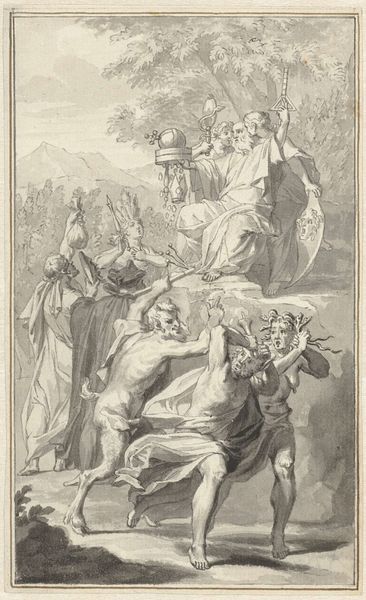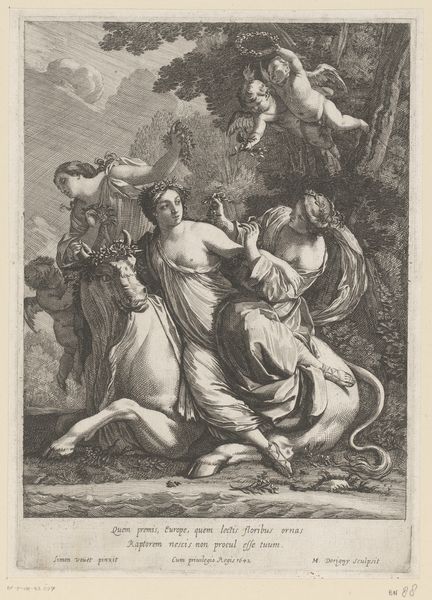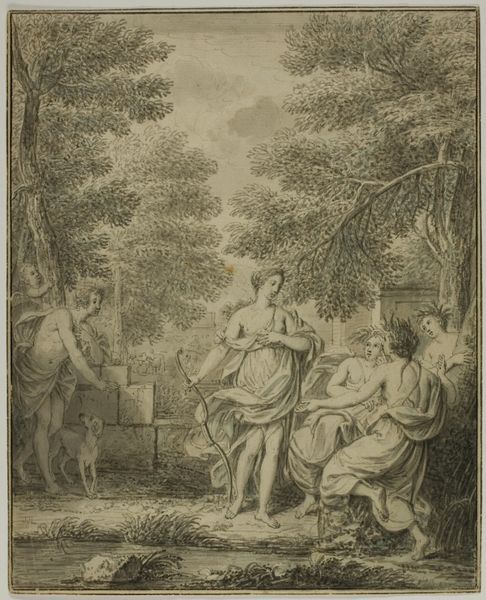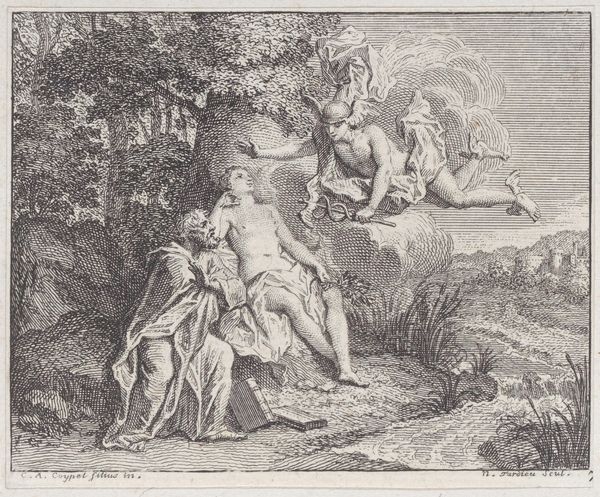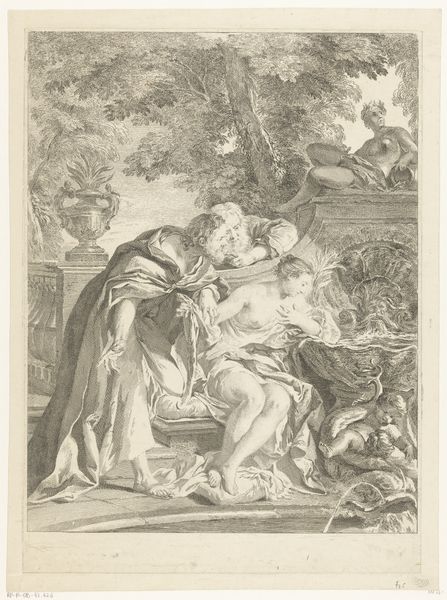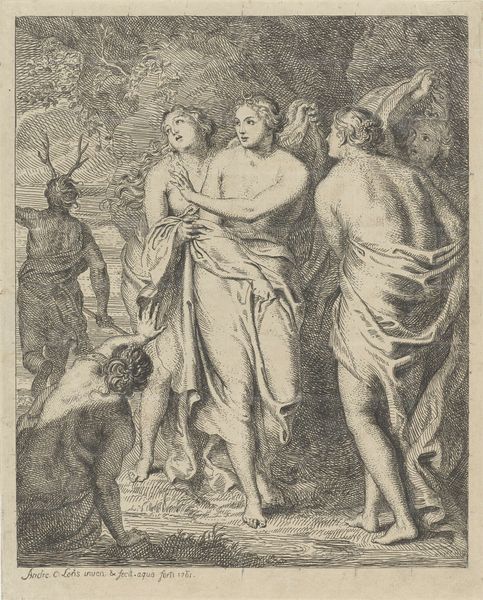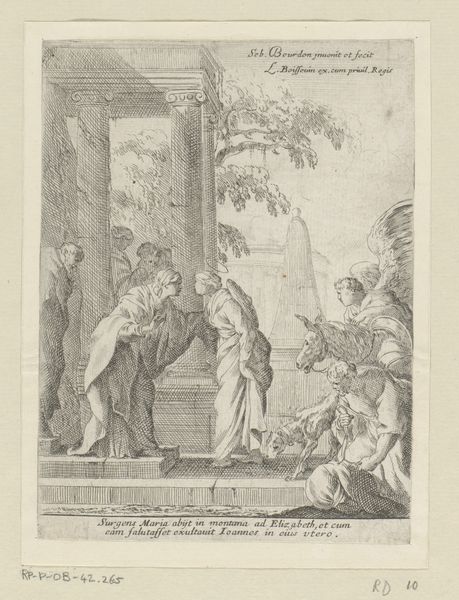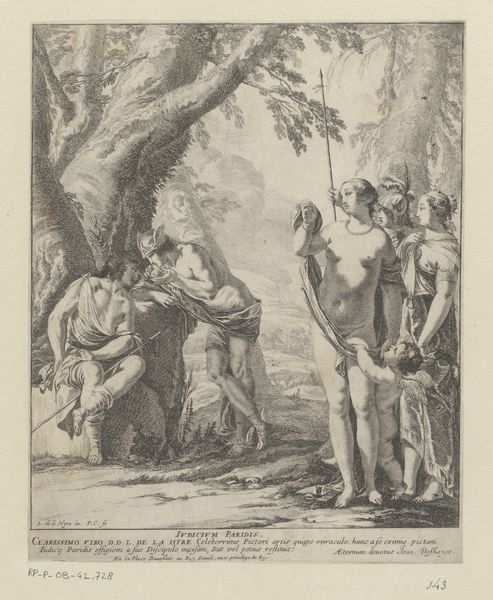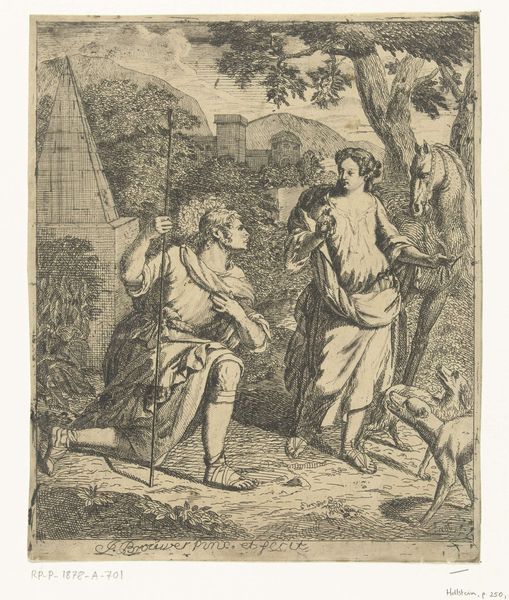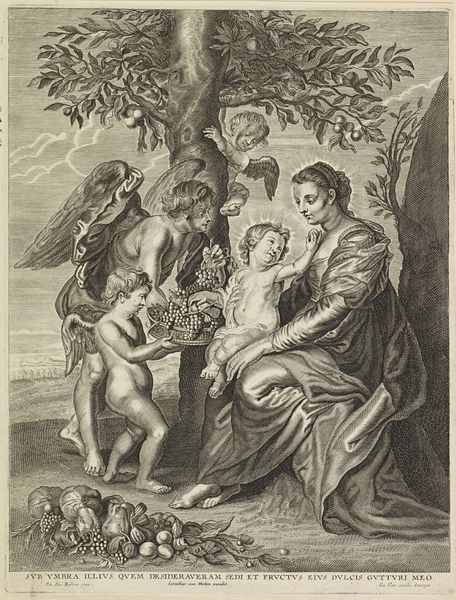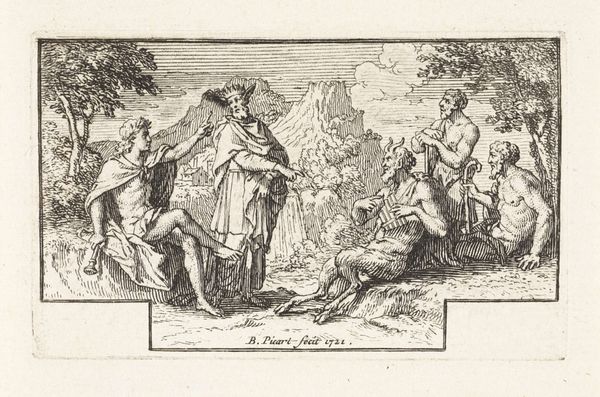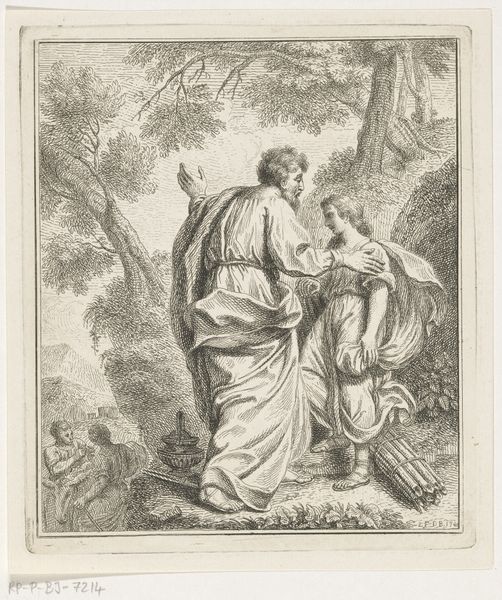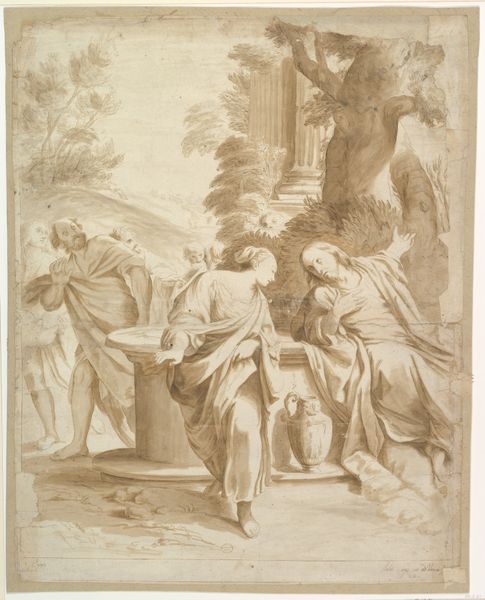
drawing, paper, ink, pencil
#
portrait
#
drawing
#
narrative-art
#
baroque
#
landscape
#
classical-realism
#
figuration
#
paper
#
ink
#
pencil
#
line
#
genre-painting
#
history-painting
#
academic-art
Dimensions: height 177 mm, width 139 mm
Copyright: Rijks Museum: Open Domain
Curator: Wandelaar's "Proserpina plukt bloemen met haar metgezellen," made sometime between 1700 and 1759, offers a peek into a mythological scene rendered with pencil and ink on paper. What jumps out at you first? Editor: The melancholic undertones in a garden setting. The monochromatic color scheme evokes a sense of both serenity and foreshadowing. It reminds me a bit of when things appear beautiful on the surface but are deeply troubled beneath. Curator: Precisely! I am captivated by the almost theatrical drama played out on this static sheet. Wandelaar isn’t just depicting a scene; he is hinting at the potent narrative of Proserpina’s abduction. The composition and shading elevate the storytelling. Editor: And the expressions, too. Look at Proserpina's slightly averted gaze, a sense of hesitancy and vulnerability even as she reaches for the flowers. It feels symbolic—touching on themes of innocence, forbidden fruit, and inevitable loss of sovereignty. Curator: Absolutely. It also seems Wandelaar uses classical realism but plants it within Baroque aesthetics. Can one look at this piece as a visual precursor to similar themes explored later by Romantic poets? Editor: I see the parallels. The tension between surface beauty and underlying darkness is palpable in both art forms. Also, flowers here symbolize transient beauty but, given Proserpina's story, there are ideas concerning forced migration, womanhood, powerlessness, and perhaps the inevitability of seasonal changes—both environmental and within patriarchal structures. Curator: And Proserpina is accompanied only by female figures, a subtle nod, perhaps, to communal support? It lends her the aura of classical goddesses frolicking—yet it hints at darker consequences to come. Editor: That brings forth questions on solidarity but, crucially, points to power dynamics—Proserpina's position highlights her status. But is that enough to save her? I think not. Curator: Agreed! This drawing acts as a stage prelude to one of mythology’s pivotal tragedies. Editor: An elegy disguised as a pastoral scene! Curator: Indeed, a testament to Wandelaar's evocative prowess, prompting me to look beneath the surface. Editor: Exactly. It’s also a good exercise in unearthing hidden dialogues beneath conventional readings of mythological art.
Comments
No comments
Be the first to comment and join the conversation on the ultimate creative platform.
